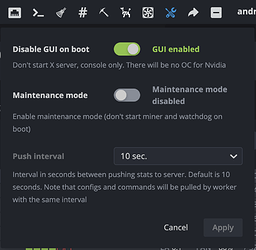
Stage 1: Stress test
Before you start overclocking the CPU, ensure that it will not surpass safe temperatures. Although Ryzen Master has its inherent pressure test, it doesn’t keep going extremely lengthy. All things being equal, we suggest the AIDA64 Extreme apparatus and its soundness test. On the off chance that you like this device, hiveos oc settings , concealing to three PCs.
Open it and select Tools from the top menu, trailed by Stability Test. Press Start when prepared and leave your PC for around 60 minutes. Ensure that never during testing do the temperatures surpass 80 degrees. Assuming they do, further develop your CPU cooling before attempting to overclock. On the off chance that you have some temperature headroom, continue to overclock your framework.
Stage 2: Frequencies
The most recent Ryzen Master programming is loaded with choices, most of which you don’t require for an essential overclock. To keep things straightforward, ensure you’re in the Basic View. Assuming your product matches the screen capture above, you’re good to go. On the off chance that not, select Basic View from the base left corner of the extended point of interaction.
In the first place, change the Control Mode from Default to Manual. This will permit you to physically change clock speed and voltages, which you’ll require for the overclock.

Dissimilar to Intel programming, you can change the clock speed straightforwardly as opposed to utilizing a multiplier. Ryzen Master will support your processor’s recurrence and test it. On the off chance that your PC is steady and the temperatures aren’t excessively hot – once more, the objective is to remain under 80 degrees can go through a similar cycle once more. Help the clock speed by 50MHz, run a pressure test, and check that everything is cool and useful.
Ryzen Master’s implicit pressure testing utility is good, however, we suggest running a test through AIDA64 after you’ve arrived at the speed you need. Once more, run the test for about an hour and give close consideration to your temperature.
Proceed with this interaction until you’ve arrived at the speed you need or you experience an accident. After that point, tone it down to the last steady setting and utilize your PC for a considerable length of time. On the off chance that it crashes once more, venture it back again and test once more. Whenever it’s ready to run the entire day while focused, this is your base overclock, which you might have the option to calibrate for some additional speed utilizing voltage control.
Stage 3: Voltage control
Expanding the CPU’s voltage can work on the dependability of an overclock. It likewise permits you to overclock significantly further. The disadvantage is that it can significantly increment temperatures. Pushing the voltage too high can harm your processor too, so tread carefully. Just make little changes all at once.
On the off chance that you’re glad to face the challenge, utilize the CPU Voltage area to move up your voltage by a .025 augmentation. From that point onward, ensure the framework is steady, then, at that point, return and rehash the cycle. Watch out for your temperature here and ensure you don’t surpass 1.4 volts.
Stage 4: Rinse and rehash
When you track down a steady recurrence and voltage, give yourself a congratulatory gesture. Presently you can increment frequencies further, giving you have extra headroom to voltage and temperature. Save your profile to secure in this large number of settings so you can involve them in later meetings.

